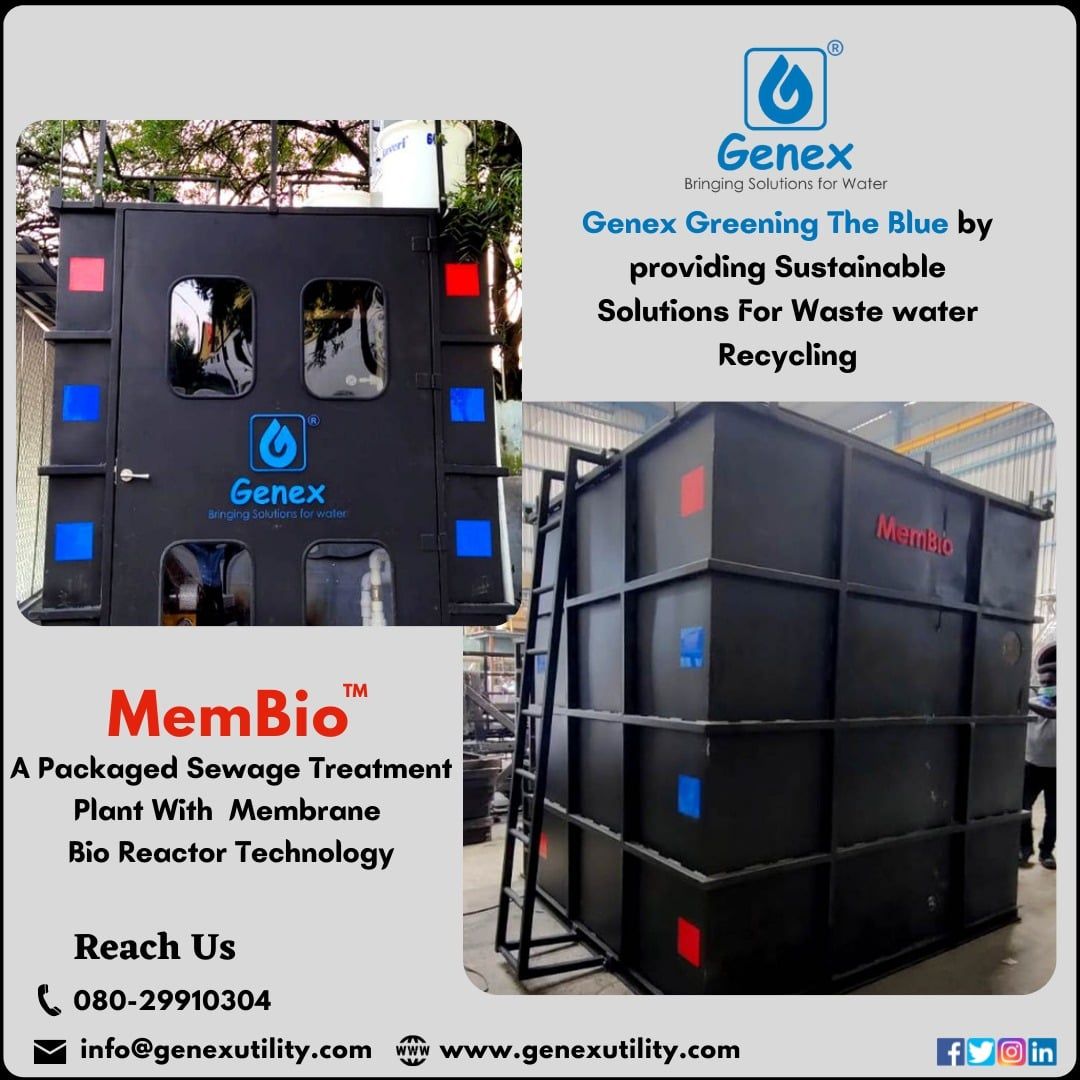Membrane bio reactor - Genex Utility
- उत्पादक
- दुनिया भर में ,
SUBMERGED MEMBRANE BIO REACTORS
The membrane bio reactor (MBR) process is a modification of the conventional activated sludge process in which the membrane filtration unit, instead of a secondary sedimentation tank, is used to separate the effluent from the activated sludge.
A submerged membrane bio reactor (SMBR) in which the membrane module is submerged inside the bioreactor tank and the permeate is suctioned directly by dead-end filtration. The membranes might be either submerged in the aeration tank or in the membrane tank according to the membrane make. In submerged configurations, the air is supplied for biological processes and membrane scouring. A SMBR is more often used to treat municipal wastewater, and can apply both hollow-fiber membranes (horizontal or vertical) and flat-plate membranes.
A suction or vacuum pump is needed to create a TMP difference for permeate production. In this case, no circulation pump is needed because cross-flow is created by aeration. This concept was first developed in 1989 to reduce energy consumption compared with side-stream MBR configuration. In some cases, the permeate side is placed in a lower position and gravity itself is the only driving force for the filtration.
The submerged MBR has a simpler configuration because it needs less equipment. The coarse bubble aeration in the membrane tank is multifunctional. In addition to membrane fouling control, it supplies oxygen to the biological process (although the efficiency of oxygen use is low). The biggest advantage of submerged over side-stream configuration is energy savings using coarse bubble aeration instead of the high-rate recirculation pump in side-stream MBRs. The capillary and hollow-fibre membranes used in many submerged MBRs have high packing density and low cost, which make it feasible to use more membranes. Membrane bioreactors are able to remove more than 95% of the chemical oxygen demand (COD) while the reduction of biological oxygen demand (BOD) is even higher.
The membrane configurations applied are mainly tubular, hollow fiber, and flat sheet (plate) and its materials can be polymeric, metallic, and inorganic (ceramic). Backwashing, high resistivity to corrosion, and fouling control are some of the major characteristics of ceramic membranes. However, they are more expensive than polymeric membranes, such as polyvinylidene fluoride (PVDF), polyethersulfone (PES), polyethylene (PE), and polysulfone (PSF) membranes, which appear to be most widely used in current applications. The pore size of membranes is typically 0.01–0.45 μm.


